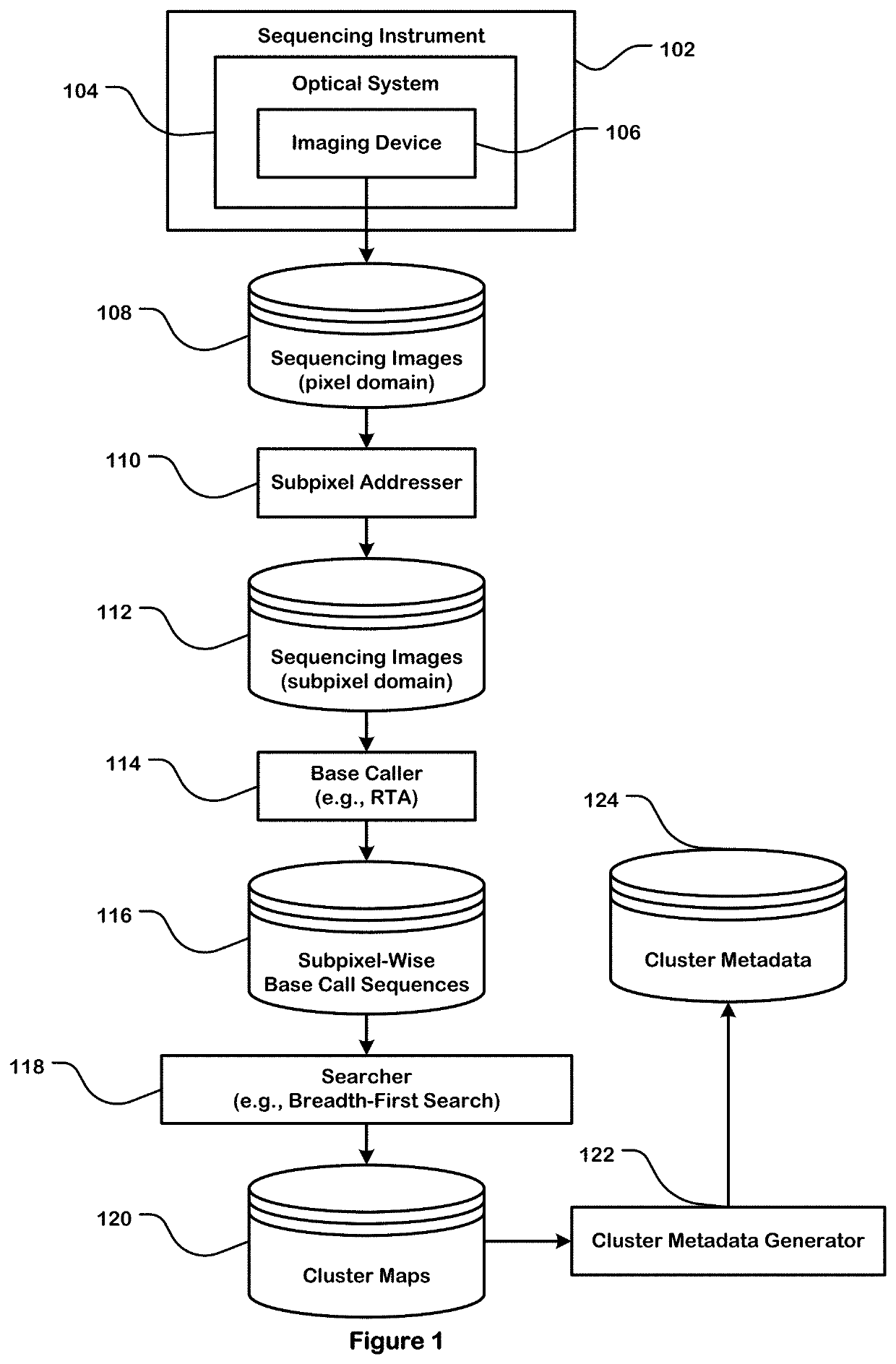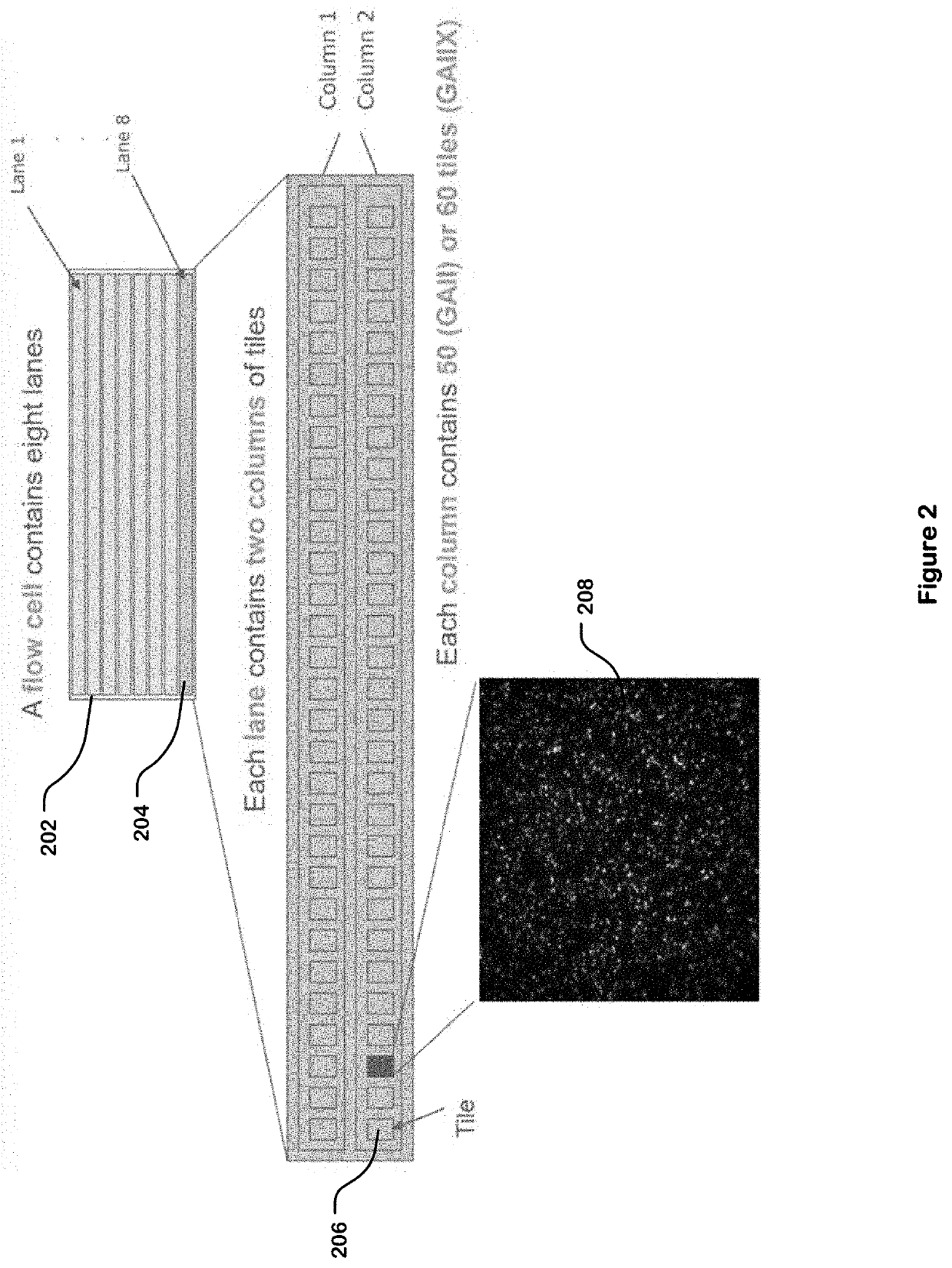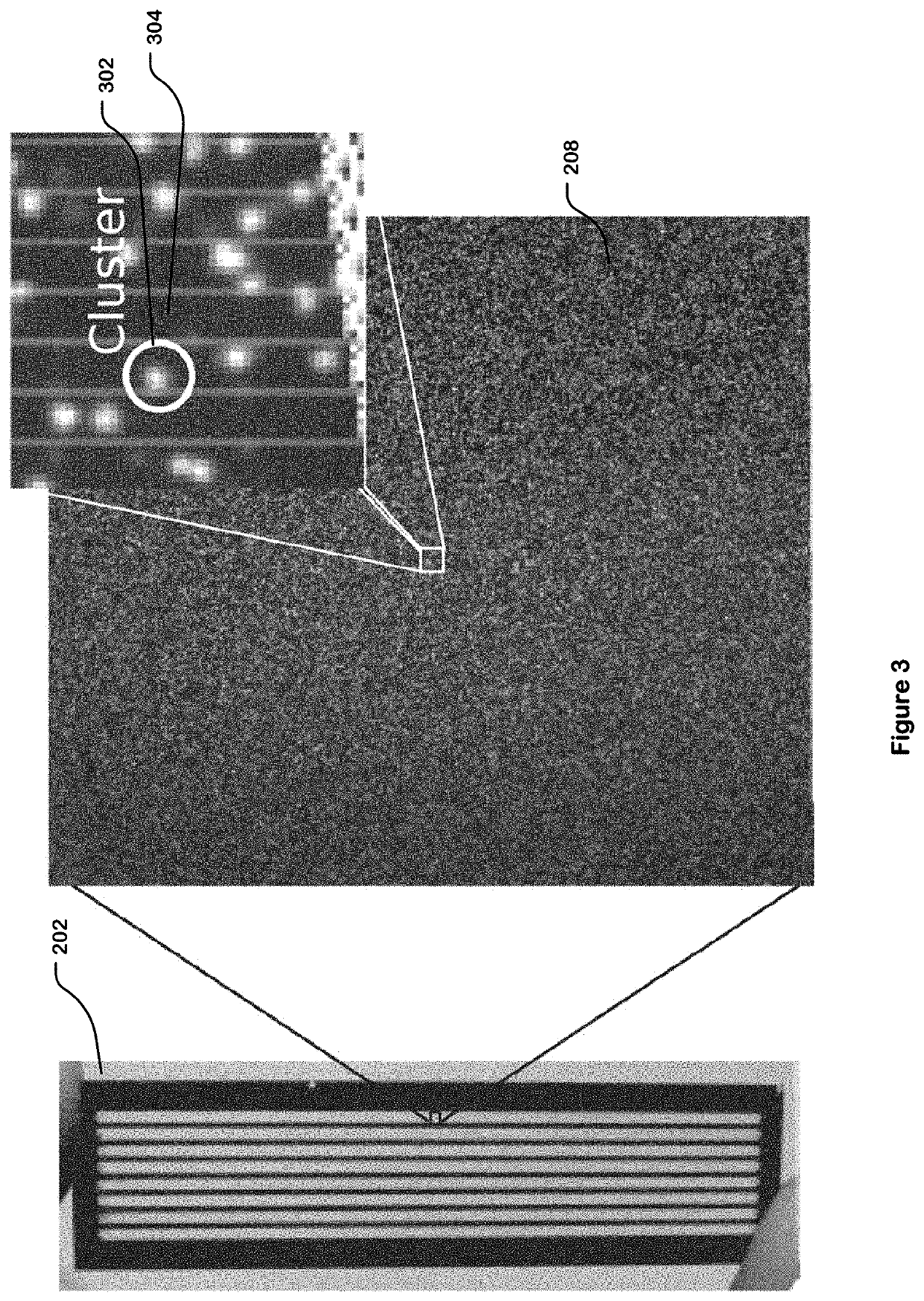Training Data Generation for Artificial Intelligence-Based Sequencing
a technology of training data and artificial intelligence, applied in the field of training data generation for artificial intelligence-based sequencing, can solve the problems of large-scale parallel and computationally intensive base calling from digital images, handicapped by limited image resolution, and inability to solve positional uncertainty
- Summary
- Abstract
- Description
- Claims
- Application Information
AI Technical Summary
Benefits of technology
Problems solved by technology
Method used
Image
Examples
example model
[0459 Outputs
[0460]FIG. 52a shows, on the left, an example binary map produced by the binary classification model 4600. On the right, FIG. 52a also shows an example ground truth binary map that the binary classification model 4600 approximates during the training. The binary map has a plurality of subpixels and classifies each subpixel as either a cluster center or a non-center. Similarly, the ground truth binary map has a plurality of subpixels and classifies each subpixel as either a cluster center or a non-center.
[0461]Experimental Results and Observations
[0462]FIG. 52b illustrates performance of the binary classification model 4600 using recall and precision statistics. Applying these statistics, the binary classification model 4600 outperforms the RTA base caller.
[0463]Network Architecture
[0464]FIG. 53 is a table that shows an example architecture of the binary classification model 4600, along with details of the layers of the binary classification model 4600, dimensionality of...
PUM
 Login to View More
Login to View More Abstract
Description
Claims
Application Information
 Login to View More
Login to View More - R&D
- Intellectual Property
- Life Sciences
- Materials
- Tech Scout
- Unparalleled Data Quality
- Higher Quality Content
- 60% Fewer Hallucinations
Browse by: Latest US Patents, China's latest patents, Technical Efficacy Thesaurus, Application Domain, Technology Topic, Popular Technical Reports.
© 2025 PatSnap. All rights reserved.Legal|Privacy policy|Modern Slavery Act Transparency Statement|Sitemap|About US| Contact US: help@patsnap.com



